Filiform needles are one of the “Nine Needles” from ancient times. According to the “Ling Shu: Nine Needles and Twelve Origins, Chapter One” and “Ling Shu: Discussion on Nine Needles, Chapter Seventy-Eight”, it is recorded: “The filiform needle is sharp like a mosquito’s proboscis, used gently and slowly, lingering slightly to nourish, in order to alleviate pain and numbness.” “Wherever evil resides in the meridians, causing pain and numbness, it is treated with this needle, which is sharp like a mosquito’s proboscis, used gently and slowly, lingering slightly, allowing the righteous qi to prevail, driving out both true and false evils, nourishing after the needle is withdrawn… The filiform needle is modeled after fine hair, measuring one inch and six tenths long, primarily used for cold, heat, and pain in the meridians.” This needle is small in size, causing minimal discomfort during treatment, applicable to any acupuncture point in the body, with the widest range of indications, and is referred to in the industry as the “Divine Needle for All Diseases!”
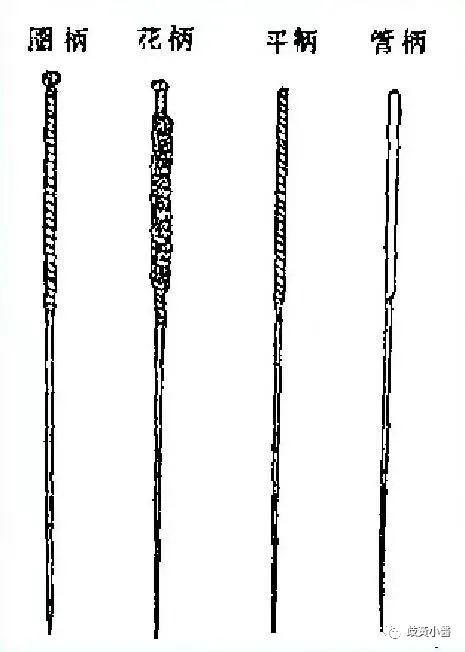
Needle Manufacturing Materials
Modern filiform needles are mostly made of stainless steel, with a straight and smooth body, possessing high strength and toughness, heat-resistant, rust-proof, and not easily corroded by chemicals, making them convenient and durable. There are also filiform needles made from other metals, such as gold and silver needles, which have better thermal and electrical conductivity than stainless steel needles, but their strength and toughness are far inferior to stainless steel needles. Additionally, due to their high cost, they are rarely used except for special needs. As for iron needles and ordinary steel needles, they are rarely used due to easy rusting and poor elasticity, toughness, and durability, except for occasional use in magnetic needle therapy.
Structure of Filiform Needles
Filiform needles are divided into five parts:
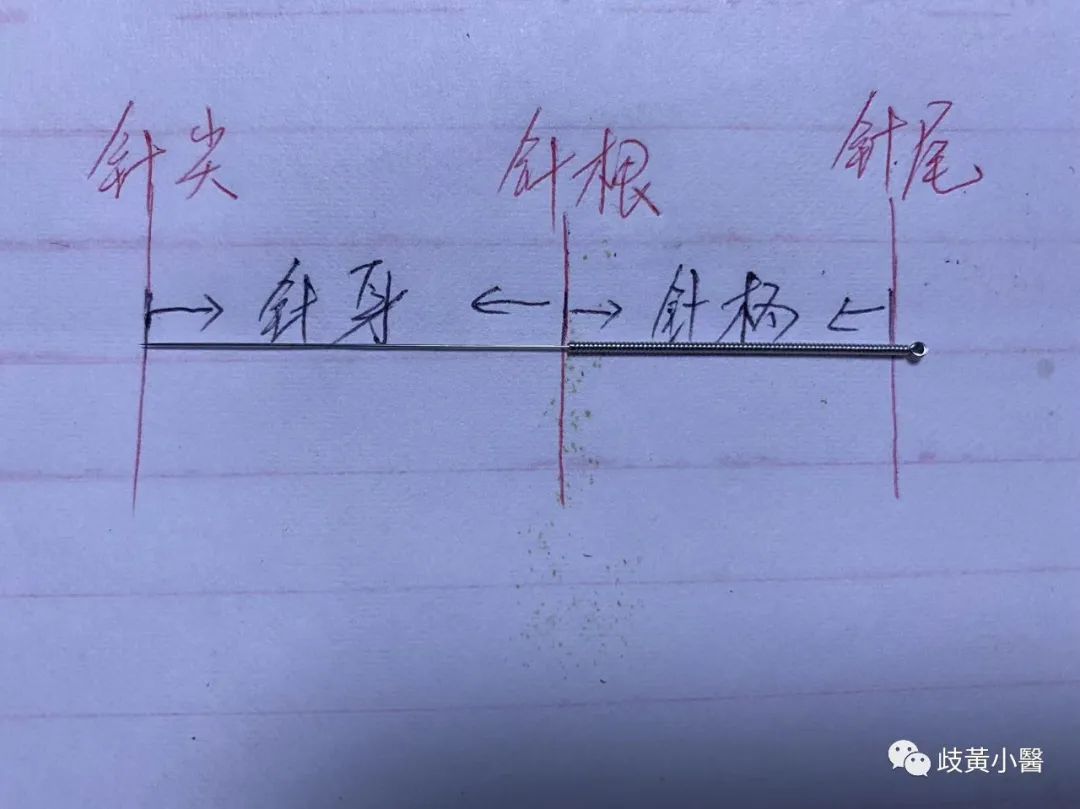
The end tightly wrapped with copper or lead wire is called the needle handle;
The end of the needle handle is often wrapped into a cylindrical shape called the needle tail;
The sharp part of the needle is called the needle tip;
The part between the needle handle and the needle tip is called the needle body;
The junction between the needle handle and the needle body is called the needle root.
Classification of Filiform Needles
According to the composition and shape of the needle handle and needle tail, filiform needles can be divided into four categories.
1. Ring Handle Needle – The ring handle needle, also known as the loop handle needle, has a needle handle wrapped in silver-plated or oxidized metal wire, forming a ring-shaped needle tail.
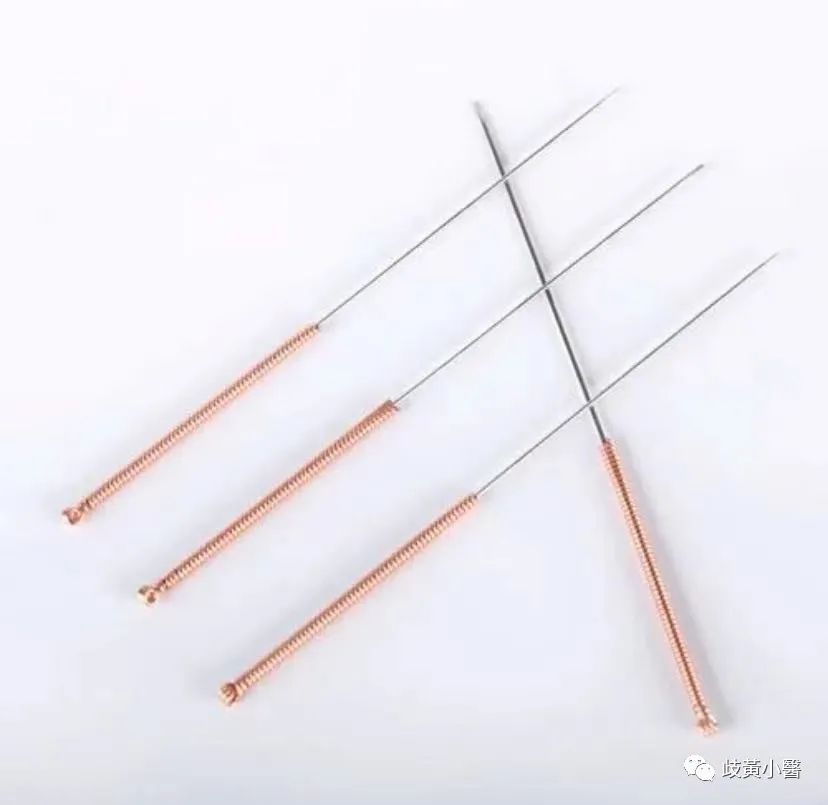
2. Flower Handle Needle – The flower handle needle, also known as the coiled dragon needle, has a needle handle with two metal wires intertwined in a coiled dragon shape.
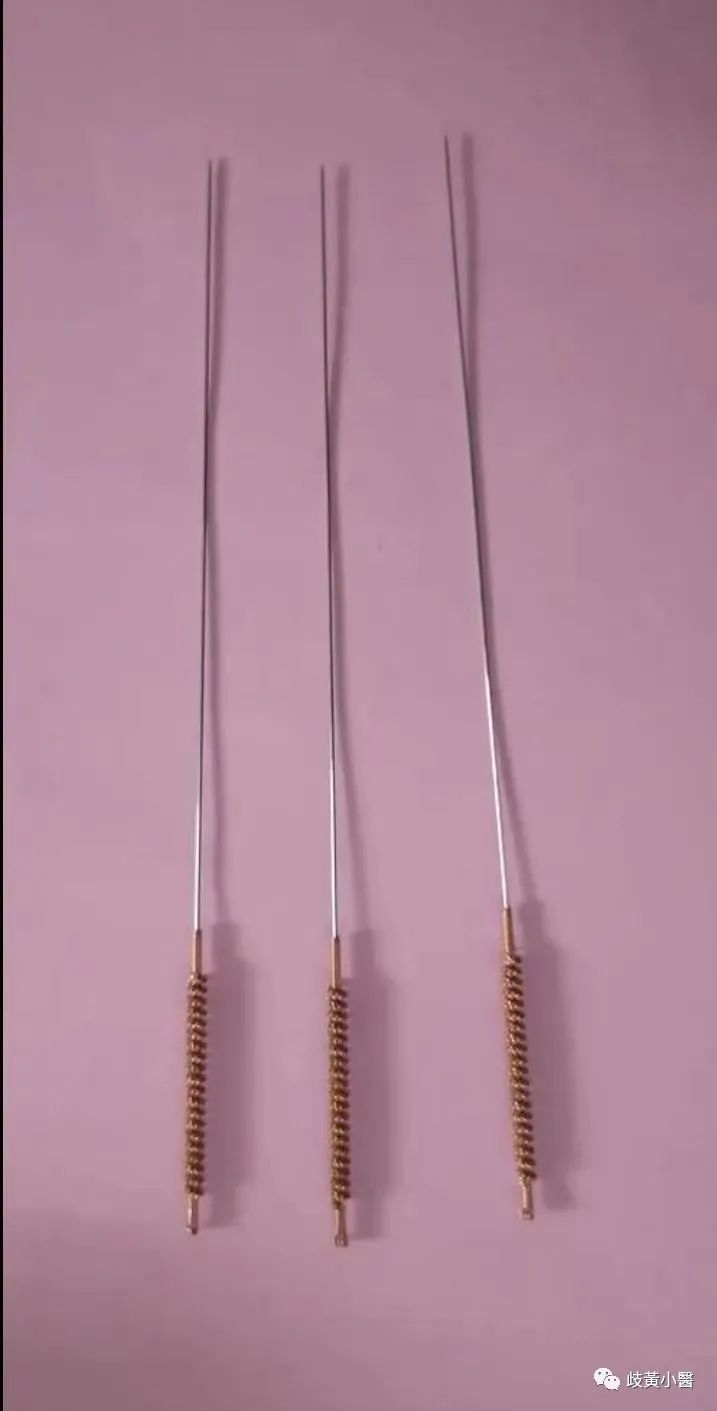
3. Flat Handle Needle – The flat handle needle, also known as the flat head needle, has a needle handle wrapped in metal wire, with no finishing at the end.
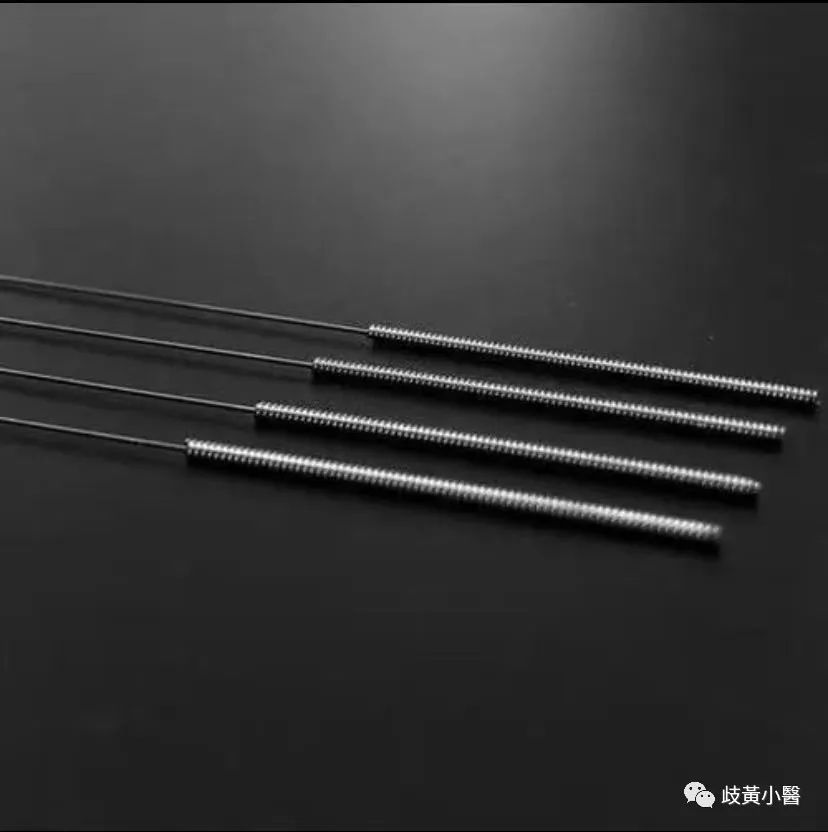
4. Tube Handle Needle – The tube handle needle is made with a tubular needle handle made of thin metal sheets or resin materials.
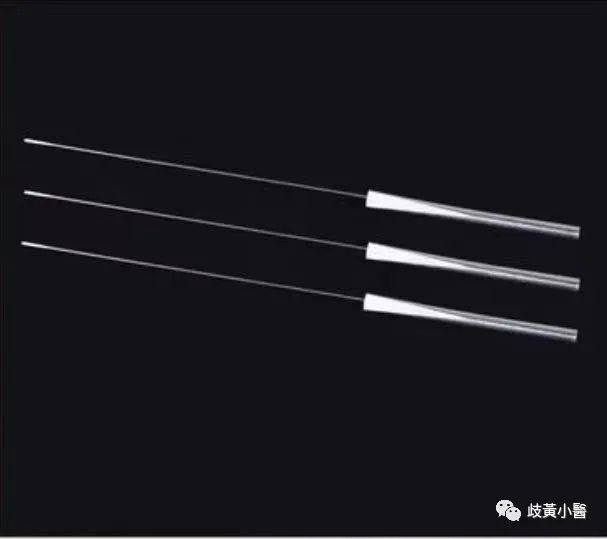
Specifications of Filiform Needles
The different specifications of filiform needles are primarily distinguished by the diameter and length of the needle body.
Filiform Needle Diameter Specification Table
|
Specification/Number |
28 |
29 |
30 |
31 |
32 |
33 |
34 |
|
Diameter/mm |
0.38 |
0.34 |
0.32 |
0.30 |
0.28 |
0.26 |
0.23 |
Clinically, filiform needles with diameters of 31 to 34 (0.25mm to 0.30mm) are the most commonly used.
Filiform Needle Length Specification Table
|
Specification/Inch |
0.5 |
1.0 |
1.5 |
2.0 |
2.5 |
3.0 |
3.5 |
4.0 |
|
Length/mm |
13 |
25 |
40 |
50 |
65 |
75 |
90 |
100 |
Clinically, filiform needles measuring 1.0 to 3.0 inches (25 to 75mm) are the most commonly used, with 1.5 inches (40mm) being the most frequently utilized.
For more content, stay tuned for the next issue~
Qi Huang Xiao Yi
 ▲ Long press to recognize the QR code to follow us ▲
▲ Long press to recognize the QR code to follow us ▲
-End of Text-
Note: The various prescriptions and formulas mentioned in this article are for reference and learning purposes for professional TCM practitioners only and should not be used as prescriptions. Non-professionals should not use them blindly. This platform does not bear any responsibility for any consequences arising from this.
Note: The various prescriptions and formulas mentioned in this article are for reference and learning purposes for professional TCM practitioners only and should not be used as prescriptions. Non-professionals should not use them blindly. This platform does not bear any responsibility for any consequences arising from this.The images and text are sourced from the internet, and the copyright belongs to the author. If there is any infringement, please contact for removal.

